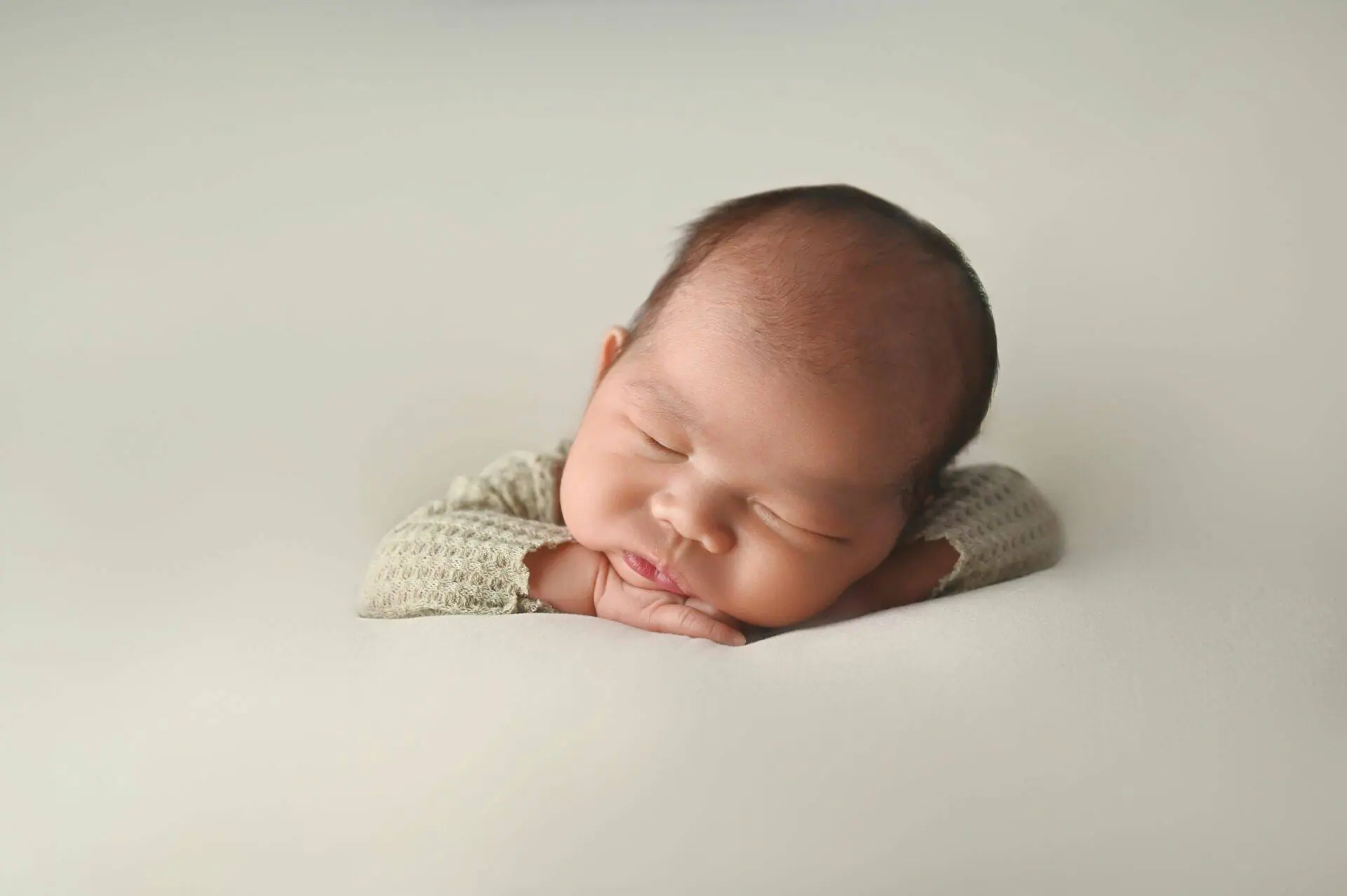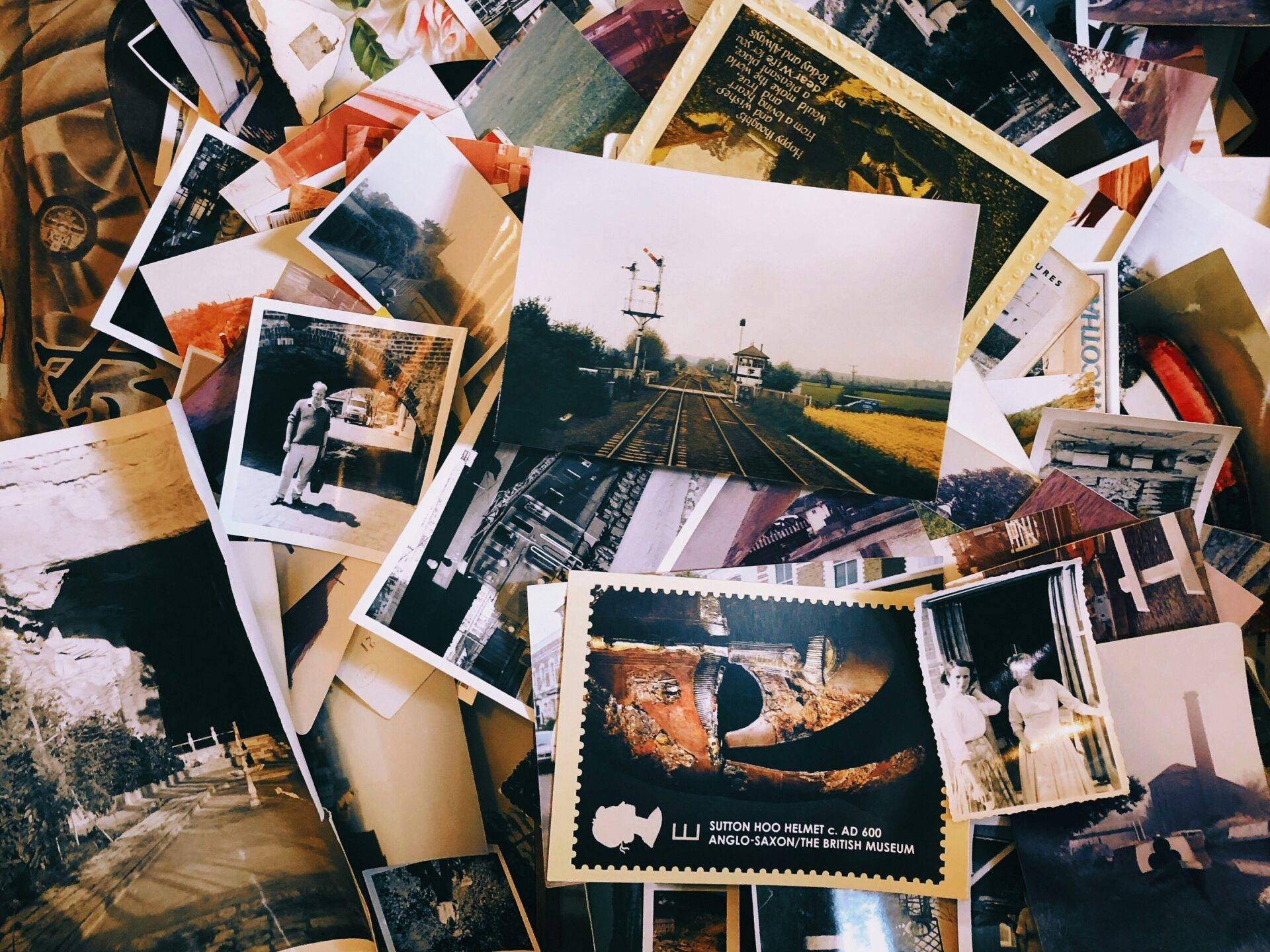As I stood there, camera in hand, I wondered how many new parents feel overwhelmed during a newborn session. I remember my first shoot; the baby was fussy and my patience wore thin. Yet, when I allowed myself to breathe and simply embrace the moment, the magic unfolded. Newborn photography is not just about capturing perfect images; it’s about the art of waiting and the beauty of patience. Let’s embark on a journey to discover how patience can transform a simple photo shoot into a soothing experience for everyone involved.
The Essence of Newborn Photography
Newborn photography is a unique branch of the photography world. It’s not just about taking pictures of babies; it’s about capturing memories that families will cherish for a lifetime. But what truly makes newborn photography stand apart from other genres? It’s an art form that blends technical skill with a deep understanding of emotions.
What Makes Newborn Photography Unique?
First and foremost, newborn photography requires a very specialized approach. If you’ve ever tried to snap a picture of a moving toddler, you know how challenging it can be. Now, imagine doing that with a newborn who has their own schedule! Here are some key points that make this genre distinct:
Patience is Paramount: Unlike other photography sessions, newborn shoots can take time. Babies need to feed, be changed, and soothed often.
Safety First: Newborns are delicate creatures. A professional newborn photographer must prioritize their safety above all else.
Artistic Compositions: It’s not just about the right lighting; it’s how you position the baby, props, and even the environment to tell a story.
These elements come together to create an experience that is as rewarding for the photographer as it is for the family.
The Delicate Nature of Capturing Fleeting Moments
Have you ever watched a baby smile in their sleep or stretch out their tiny fingers? Those moments are fast. Blink, and you might miss them. Capturing these fleeting moments is both an honor and a challenge.
To understand why this is significant, let’s consider some of the most precious aspects of these early days:
Growth is Rapid: Newborns change incredibly fast. One day they have that squishy face, and in a blink, they’re smiling, crawling, or even walking.
Unique Expressions: Each baby has their own quirks. The tiny frowns, sleepy yawns, and little sighs are all part of their personality.
Family Bonding: These photographs serve as time capsules. They capture intimate family moments that can be revisited for generations.
In short, these moments are more than just photographs; they are memories. Every image tells a story of innocence and growing love.
Understanding the Emotional Significance of First Photographs
When I meet new parents for a shoot, I can feel the nervous excitement in the air. It’s palpable! Why is that? The emotional significance of photographing a newborn cannot be overstated. Here are some points to consider:
Capturing First Milestones: The first few days and weeks mark important milestones in a baby’s life. These aren’t just second-hand memories; they’re cherished moments for parents.
Creating Family History: Newborn photos contribute to a family’s history. They often find their way into family albums, becoming a first chapter for the baby’s future.
A Bond with Nature: Newborn photographers often incorporate elements of nature, which enhances the emotional depth of the images. Think about how beautiful a baby looks surrounded by soft blankets and vibrant flowers!
When I take a newborn’s photograph, I’m not just clicking a button. I’m honoring a moment that signifies life, love, and all the possibilities that lie ahead for this little one.
Table of Emotional Milestones Captured in Newborn Photography
Milestone Emotional Significance First Yawn Symbolizes comfort and tranquility. First Smile Captures pure happiness and innocence. First Stretch Shows growth and the beginning of mobility. First Family Photo Represents unity and love in the family.
Each of these milestones has its own beauty and significance. They all play an important role in showing just how quickly life can change.
Capturing these unique moments successfully requires more than just technical skill. It’s about connecting with the baby and their family. I’m constantly reminded of how vital it is to create a safe and calm atmosphere during shoots. Believe me, it makes all the difference!
To sum up, the essence of newborn photography is a combination of patience, emotional intelligence, and artistic skill. It’s a special way to freeze time, giving families the chance to relish their new arrival. So next time you witness a baby’s candid moment or a sweet family smile, remember: It’s more than just a photograph. It’s a memory that lasts a lifetime.
Setting Up for Success: Preparing for the Shoot
Preparing for a newborn shoot can be thrilling yet daunting. It’s not just about a camera and some lights; it’s an intricate process that requires careful planning. A successful shoot is based on three key pillars: timing, comfort, and communication. Let’s dive deeper.
1. Crafting a Timeline That Accommodates the Baby’s Needs
First things first, babies have their own schedules. They cry, they sleep, and they feed—often at the least convenient moments. So, how do we create a timeline that works for the little one?
Understand Baby’s Rhythms: Each baby is different. Some are night owls, while others wake at the crack of dawn. Observing or asking the parents about their routine can help us figure out a suitable time.
Be Flexible: Remember, it’s crucial to allow for time in your schedule for feeding and soothing. If a baby is fussing, we can’t just shove them into a prop and pretend everything is fine.
Account for Breaks: During the shoot, be sure to plan breaks. This gives babies a chance to refresh, and it also allows parents to catch their breath. You know what they say, “A happy parent equals a happy baby.”
By prioritizing the baby’s needs, we can create a smoother workflow. This isn’t about speed; it’s about capturing genuine moments in a relaxed atmosphere. Are parents smiling? Is the baby calm? Those are the moments we want to preserve.
2. Creating a Cozy, Safe Space for the Shoot
Now that we’ve got a timeline, let’s focus on the environment. The setup is just as important as the timing. A cozy space makes a world of a difference.
Props: Make sure to have diverse props available. Soft blankets, baskets, and cute outfits can add an extra layer of charm to your shots. However, remember—simplicity often speaks volumes.
Lighting: Natural light is your best friend. Additionally, try a few lamps with soft light bulbs for more control. Avoid harsh lighting; it can be jarring for a sleepy babe.
Temperature: Newborns prefer a warm environment. The room should be comfortably warm, around 75°F (24°C) to help soothe the baby. This helps prevent them from waking up due to being cold.
When combined, these elements create a safe, comfortable, and inviting space. As someone who has photographed numerous newborns, I can tell you: babies can sense comfort. If they feel cozy, they’ll often cooperate with us. Trust me; a comfy baby leads to adorable photos!
3. Engaging with Parents to Align Expectations
Finally, let’s talk about the parents. They have high hopes for the shoot, and it’s essential to communicate openly. Misaligned expectations can lead to frustration on both sides.
Initial Consultation: Before we even touch a camera, I like to sit down with parents. Here, we can discuss their vision, any specific poses, and style preferences.
Explain the Process: Share what to expect during the shoot. This includes discussing the potential for crying and long feeds. That buzz of excitement at the start can dwindle if they’re unsure of what’s to come.
Contingencies: Set the stage for the unexpected. What if the baby refuses to sleep? Or what if the lighting conditions become unfavorable? Letting parents know these scenarios ahead of time can ease their worries.
Open communication not only builds trust, it also paves the way for a more enjoyable experience. And who doesn’t want happy parents? They’re the ones sharing your work afterward!
4. Summary – The Art of Preparation
Getting ready for a newborn shoot is more than just a few logistics. It’s a delightful dance we perform with parents and their little ones. We’re crafting timelines, creating cozy spaces, and engaging meaningfully. All these are pivotal components that set the stage for a successful shoot.
It’s like piecing together a puzzle: each element must fit perfectly. A little planning and patience lead to magic in the final images. So next time you’re gearing up for a shoot, remember these pillars. It’s these details that truly make the difference.
Element Considerations Timeline Baby’s feeding/sleeping schedule; breaks for parents and baby. Environment Comfortable temperature; soft lighting; simple, cozy props. Communication Discuss expectations; explain potential challenges; set contingency plans.
By ensuring that these aspects are covered, we’re setting the foundation for something special. Remember, capturing baby milestones is a once-in-a-lifetime memory. Let’s make it count!
Mastering the Art of Gentle Handling During the Shoot
As a photographer, especially when it comes to capturing the sweet innocence of newborns, one word rings a bell: patience. The world of newborn photography demands more than just technical skills; it requires an understanding of how to handle these precious little beings gently. Let’s dive into some essential techniques for safely posing a newborn, the significance of soothing methods during the shoot, and how to read a baby’s cues to adjust your approach accordingly. Trust me, when we master these skills, the results will truly shine through in our photographs!
1. Techniques for Safely Posing a Newborn
Newborns are delicate, so the way we pose them matters immensely. Here are some tried-and-true techniques to keep in mind:
Support is Key: Always support the baby’s head and neck. For example, when positioning the baby on their tummy, place a gentle hand under their chin. This will create a more comfortable pose and keep the infant safe.
Use Props Wisely: When using baskets or blankets, ensure they are soft and secure. A fluffy blanket can create a cozy atmosphere, while a weighted basket helps prevent accidental tipping over.
Check the Baby’s Comfort: Make sure the room is warm enough. A baby may not show discomfort, but if they’re shivering, trust me—they’re not in the best mood for posing.
Take Your Time: Rushing through poses can lead to accidents. Instead, move slowly and gently. This keeps the baby calm and helps capture those adorable, natural expressions.
Now let’s talk about comfort breaks. Newborns can be unpredictable, and we need to work within their rhythms.
2. Practicing Soothing Methods: The Importance of Feeding and Burping Breaks
A crucial part of photography with newborns is understanding their basic needs. Every parent knows this. Little ones may pee, poop, or just need to eat. Scheduling regular breaks to meet these needs can help maintain a calm atmosphere. Here’s why:
Feeding Breaks: Babies are not always ready to be stars on demand. Feeding should always be prioritized. It’s not just about nourishment but also about comfort. When the baby is well-fed, they are less likely to fuss during the shoot, and you can capture those serene expressions.
Burping is Essential: A gassy baby is an unhappy baby. So, after feeding, take a moment to burp the little one. It’s a simple yet effective way to ensure they are comfortable. Plus, a relaxed baby is much easier to photograph.
Soothing Techniques: Swaddling, shushing, or gentle rocking can help calm a fussy newborn. If the baby begins to cry, don’t panic. Instead, use soothing methods to comfort him or her. A happy baby makes for beautiful photographs.
Don’t forget to communicate with the parents about these breaks. A simple chat about how long to expect for changing or feeding can set the right tone.
3. How to Read a Baby’s Cues and Adjust Your Approach Accordingly
Every baby is unique. Recognizing their cues is vital for a successful shoot. But what does this mean exactly? Here’s what I’ve found helpful:
Watch Their Body Language: If the baby’s limbs are stiff or fisting their hands, it may indicate stress or discomfort. Instead of forcing a pose, give them a moment or change the environment slightly.
Watch for Eye Movements: A baby that is sleepy might have droopy eyelids. It’s best to transition to cozy poses that encourage them to fall asleep instead of trying to get a captivating wide-open-eye shot.
Tuning into Sounds: A soft coo might mean contentment, while a fussy cry can indicate it’s time for a break. Respond to their sounds accordingly—this builds trust.
Consider this: What’s the difference between a fussy baby and a sad one? A fussy baby often just needs some care, while a truly sad baby might be uncomfortable. Listening to our tiny subjects is just as crucial as camera skills!
Understanding Baby Interactions
Here’s a quick reference table for understanding newborn cues:
CueInterpreted NeedActionCooingContentmentContinue shootingCryingDiscomfort or fatiguePause for feeding or soothingSpitting upOverfeeding or discomfortChange position and clean upClenching fistsStressSoothing and gentle exercise
Being aware of the cues not only helps during the shoot but also shows parents that we are attentive and caring, which builds trust.
In each session, planning can have a significant impact. Newborn photography is about capturing the moment, and doing so gently is essential. So, let’s be respectful, attentive, and, most importantly, patient!
The Transformative Power of Being Patient
Patience is often easier said than done, especially when it comes to newborn photography. In this unique opportunity, we get a chance to step into the lives of new parents, capturing fleeting moments that they’ll cherish forever. But have you ever thought about how the art of being patient can transform these images into something truly priceless? Let’s dig deeper.
Capturing Candid Smiles
Imagine a sleepy little face, if you just wait a moment, it may break into a smile. It’s those unposed, authentic moments that define great photography. The magic lies in recognizing that the best pictures often come when we least expect them. Timing is everything. If you rush, you might miss that perfect smile or adorable stretch.
Keep your camera ready; those smiles don’t last long!
Observe the baby’s natural transitions; smiles often happen when they feel safe or comfortable.
With newborns, patience equals reward. Rushing through the process can lead to missing these genuine expressions. Have you ever seen a photo that just makes your heart swell? That could be just a moment of spontaneity that occurred when the baby was relaxed. The secret to capturing these moments is simple: let things unfold at their own pace.
“The best moments in life are often the ones that come unplanned.”
Maintaining a Calming Atmosphere
Calibration isn’t just for your camera; it’s for the environment too. A calming atmosphere is essential. It aids in relaxing both the baby and the parents. Think about it: if you walked into a space that felt hurried and frantic, how would that impact your mood?
Here are some tips for creating a peaceful setting during a shoot:
Soft Lighting: Use gentle, natural light where possible.
Quiet Space: Limit distractions. Soft background music can help, but avoid overwhelming sounds.
Comfortable Environment: Ensure that both the baby and parents feel cozy. Bring blankets, pillows, and other comforts.
Preparation: Communicate with parents beforehand regarding what to expect so they too can come prepared.
Allow for breaks as needed. Newborns have their own schedules—feeding, changing, crying. Instead of viewing these moments as interruptions, see them as opportunities to capture more genuine interactions. After all, who can resist the sight of a parent soothing their little one?
How Patience Fosters Trust
Almost like a dance, patience helps to build trust—a bond between the photographer, the baby, and the parents. The newborn doesn’t know you. But as you take your time, they begin to recognize your gentle nature. This, in turn, creates a sense of security.
I recall one session where I had to pause several times for soothing. Each time, the baby became more comfortable with me. This eventually led to beautiful images, showcasing the relationship between parent and child. It was a reminder that every moment spent showing care counts.
Emotional connections are what great photography thrives on. When parents see you taking time for their baby, it builds rapport. They start to trust that you’re not just there for a quick shot but instead to document something beautiful. This mutual understanding is what transforms a collection of photos into a cherished memory.
Table: The Impact of Patience in Newborn Photography
Aspect Patience in Practice Outcome Capturing Moments Waiting for the baby to smile or settle Authentic photos with genuine expressions Creating a Calm Environment Setting up soft lights and quiet spaces Relaxed baby = beautiful, peaceful photos Building Trust Taking time to engage with the baby Stronger connections result in better captures
Being patient during a session is not just a skill; it’s a mindset. It shows respect for the baby’s rhythms and the parents’ emotions. This approach not only enhances the quality of your work but creates lifelong memories.
So next time you pick up your camera, take a breath. Embrace the unexpected. In the world of newborn photography, sometimes the biggest rewards come to those who wait.
After all, capturing the beauty of new life isn’t just about the clicks and flashes. It’s about those quiet, profound moments where patience transcends into artistry.
Challenges You May Encounter and How to Overcome Them
Newborn photography can be as rewarding as it is challenging. Every photographer, whether seasoned or just starting, will face hurdles during a shoot. Let’s dive into some common challenges and explore how we can tackle them together.
1. Anticipating and Managing Fussy or Uncooperative Newborns
Picture this: you’re set for a perfect newborn shoot, props are ready, the lighting is fantastic, and then—your little model won’t settle down. Sound familiar? It’s a common scenario in our world. Newborns can be unpredictable. Sometimes they cry, while other times they might be wide awake when they should be napping.
Know the Signs: Familiarize yourself with the signs of a hungry, tired, or uncomfortable baby. This way, you can anticipate needs before they lead to fussiness.
Parental Involvement: Communicate with the parents. They know their baby best. Encourage them to soothe their child when necessary.
Soothing Techniques: Discover effective soothing techniques. Rocking, gentle swaying, or softly humming can work wonders. Use a white noise machine to mimic sounds from the womb; it can help calm an agitated baby.
Patience is Key: Remind yourself that newborns often need time to acclimate to their surroundings. It might take a while, but patience often leads to beautiful outcomes.
Remember the time when a seemingly fussy baby suddenly smiled while being cradled? Those are precious moments captured when patience prevails. How can we turn these challenges into opportunities? By being adaptable and open to learning, we can create stunning images that reflect the authenticity of these tiny humans.
2. Time Management: Why Some Shoots Go Longer Than Expected
We’ve all been there—what should be a quick hour-long shoot drags on for two or three. Sometimes it feels like time is slipping through our fingers. Understanding the causes of these delays can help us plan better in the future.
Reason for Delay Solution Baby needs to be fed or changed Allocate time beforehand for feeding and changing breaks. Positioning or prop adjustments Have props organized and easily accessible, reducing setup time. Parental distractions Guide parents on what to expect and how they can help during the shoot. Unpredictable baby behavior Build in time for breaks and flexibility in your schedule.
Planning is essential. We should communicate clear expectations with parents. For instance, it’s better to say that the photo session may last 2 to 3 hours due to the nature of newborns. This transparency helps reduce stress on all fronts.
In fact, about 90% of parents reported a more relaxed experience when they understood the unpredictable nature of babies. Just knowing that things may take a little time can make a world of difference.
3. The Importance of Staying Calm and Collected in the Face of Chaos
Chaos is almost a given when working with newborns. Unexpected diaper changes, sudden cries, and other surprises can attempt to derail even the best-laid plans. Staying calm within this chaos is not just beneficial; it’s essential.
“Your vibe attracts your tribe.” – Unknown
My calm demeanor can influence the parents and the baby during a session. When I show patience and control, it can set the tone for a positive experience. Here are some tips on managing the chaos:
Breathe: Take deep breaths to steady your nerves. A few deep inhalations can refocus your mind and heart rate.
Take Breaks: If you feel overwhelmed, suggest a short break. Grab a glass of water or simply step outside for fresh air.
Focus on the End Goal: Remind yourself of the beautiful images you’ll create. This vision can help pull you through the chaotic moments.
Embrace the Chaos: Sometimes, candid moments can make beautiful photographs too. Be open to capturing unexpected smiles or darling expressions.
Often, I find that some of my favorite shots come from unexpected, spontaneous moments. For instance, a baby yawning can be the most charming picture you could capture! It demonstrates that the journey is just as important as the destination.
In conclusion, while newborn photography comes with a unique set of challenges, the key to overcoming them lies in preparation, communication, and maintaining a positive mindset. We all have our strategies, and by sharing and learning from each other, we can grow as artists, capturing the fleeting moments of these precious lives. Every challenge we face is an opportunity to learn and grow, transforming chaos into art.
Cultivating a Lasting Impression: Final Thoughts
As we wrap up our discussion on the importance of patience in newborn photography, I find it essential to take a moment and reflect on the integral role that patience plays in achieving success in this art form. Photography isn’t just about capturing moments; it’s about creating a story. And patience is the guiding force behind every great shot.
Patience: The Heartbeat of Photography
Have you ever felt the frantic pressure during a photoshoot, where every tick of the clock feels like a countdown to disaster? I certainly have. But here’s the thing: the best photographs often come when we slow down, take a breath, and allow the moment to unfold.
The moments we capture can never be replicated. That’s why patience is not just a virtue; it’s a necessity. It gives photographers the chance to observe, to see the beauty in stillness, and to seize the perfect expression. According to a 2020 survey by the Photography Association, 78% of successful photographers cited patience as a key component in their creative process.
Memorable Moments from My Journey
Thinking back on my own experiences, I chuckle at some of the challenges I faced while working with newborns. One particular session stands out: I had prepared everything perfectly, anticipating the ideal smiles and poses. But the baby? Not so much. The little guy decided it was time for a snack, a diaper change, and of course, a good cry.
Instead of panicking, I reminded myself of the beauty of these moments. I took my time, allowed the parents to tend to their little one, and waited patiently. What emerged from that session were not just photos; they were genuine moments of connection. The soft smile of a mother nursing her child and the candid giggles when the father tried to cheer up his newborn. Those images became timeless treasures.
That shoot taught me something invaluable: *Sometimes, the best pictures come from the unexpected.* Yes, we can plan and prepare, but being adaptable brings out the magic hidden in every moment. As photographers, we must be storytellers—patiently waiting for the narrative to unfold before our eyes.
Embracing Your Unique Journey
Every photographer has a unique story. I mean, have you ever talked to someone about their shooting experiences? They can be wildly different! Some might find serenity in nature, while others thrive amidst the chaos of newborn shoots. What matters is finding your own journey and embracing it. *Your experiences lend a personal touch to your work.*
Here are a few tips I’ve learned along the way that have helped me appreciate my journey:
Celebrate Small Wins: Every successful shot, every happy tear captured is a testament to your growth.
Learn from Mistakes: Every missed opportunity can be turned into a valuable lesson. Maybe the baby is unpredictable; perhaps you didn’t have the right lighting. Each mistake will guide you toward better outcomes.
Connect with Others: Share your experiences and learn from fellow photographers. This can broaden your perspective and make your journey richer.
By letting go of the pressure to be perfect and focusing instead on the joy of capturing new lives, we naturally evolve as photographers. I encourage everyone, whether a beginner or a pro, to *embrace your unique journey.* The feelings you evoke and the moments you capture through patience and authenticity will set you apart in this industry.
Final Thoughts
As I conclude, keep in mind the essential ideas we’ve explored together. Patience is not merely a nice-to-have quality; it’s fundamental to every step in the photography process. It allows us to capture genuine moments, create trust with our subjects, and fosters a calm environment conducive to creativity.
With each shoot, take a moment to breathe, to be thankful for the opportunity to create. These experiences remind us of the joy behind photography and the privilege of capturing life’s fleeting moments. So, let’s commit to cultivating that sense of patience. I assure you, the results will be worth it.
TL;DR: Patience is essential in photography, particularly in newborn shoots. My personal experiences highlight that unexpected moments can lead to beautiful outcomes. Embrace your journey, celebrate small wins, and learn from your mistakes to nurture your unique style.





